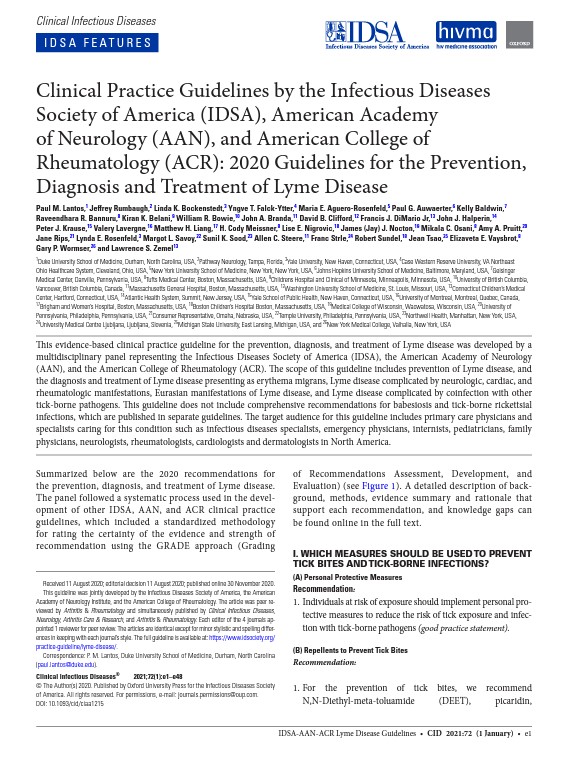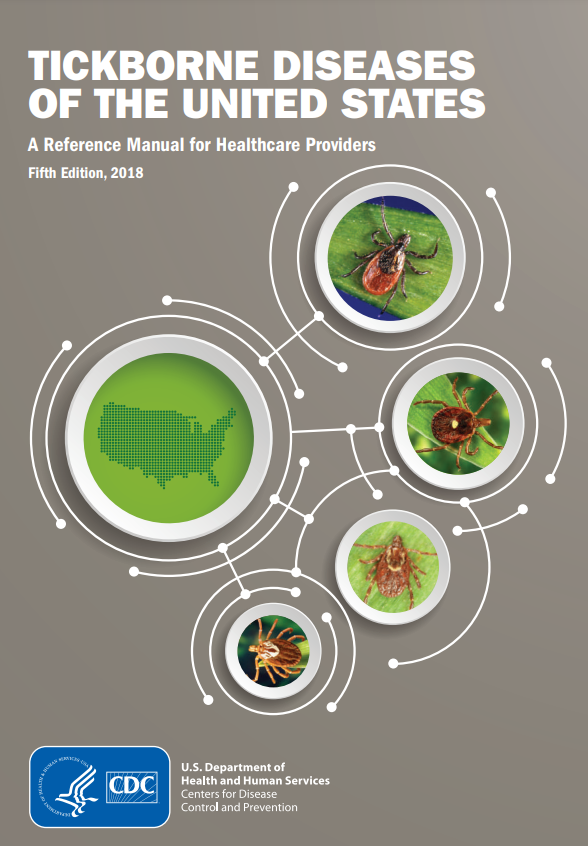DHHS → MeCDC → Disease Surveillance → Epidemiology → Vector-borne Diseases → Babesiosis
Babesiosis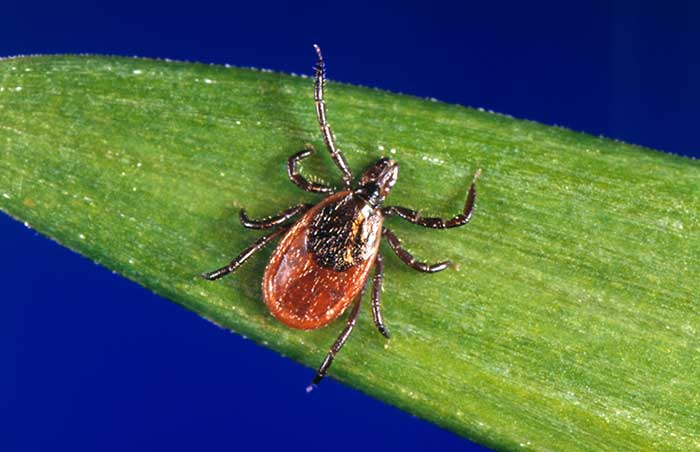
On this page:
- About Babesiosis
- Symptoms
- Prevention
- Resources for Educators
- Reports and Publications
- Resources
- Resources for Healthcare Providers
About Babesiosis
Babesiosis is a disease caused by tiny parasites that infect red blood cells. Babesiosis is most commonly transmitted to a person through the bite of an infected deer tick (Ixodes scapularis). Babesiosis is also spread through transfusion of contaminated blood. In rare instances, a mother can pass babesiosis to her child during pregnancy and delivery.
Babesiosis cases are increasing in Maine as the deer tick spreads throughout the state. Babesiosis is treatable and is best prevented by avoiding exposure to ticks.
Symptoms
Many people infected with the parasite that causes babesiosis do not develop any symptoms. Symptoms may begin within a few weeks or months of an infected tick bite but may sometimes take longer to develop. Signs and symptoms may include:

Fever and chills

Headache

Feeling very tired

Anemia (having a lower red blood cell count than normal)
Babesia parasites infect and destroy red blood cells. This leads to a special type of anemia called hemolytic anemia. This type of anemia can also cause jaundice (yellowing of the skin) and dark urine.
See a healthcare provider if you become ill after a tick bite or spending time in areas where ticks commonly live. Be sure to mention a recent tick bite or time spent in tick habitat to your healthcare provider.
Prevention
Prevent Tick Bites
The best way to prevent babesiosis is to prevent tick bites in the first place. Take these simple steps every day to prevent tick bites:

Wear light-colored, long-sleeved clothing and pants. Tuck your pants into your socks.

Use an EPA-approved bug spray.

Stay in the middle of trails.

Do daily tick checks and check your pets for ticks.
Protect Your Yard From Ticks
You can make your yard a tick-safe zone:
- Keep the lawn mowed.
- Keep leaves raked and get rid of leaf piles.
- Move wood piles away from the house. Mice like to live here and can bring ticks with them.
- Move birdfeeders away from the house, gardens, and yard toys. Deer and mice like birdfeeders and can bring ticks into the yard.
- Use crushed stone or woodchips to make a tick-safe barrier around your yard. This should be 3-feet wide to separate the yard from the woods and keep ticks from crossing into the yard.
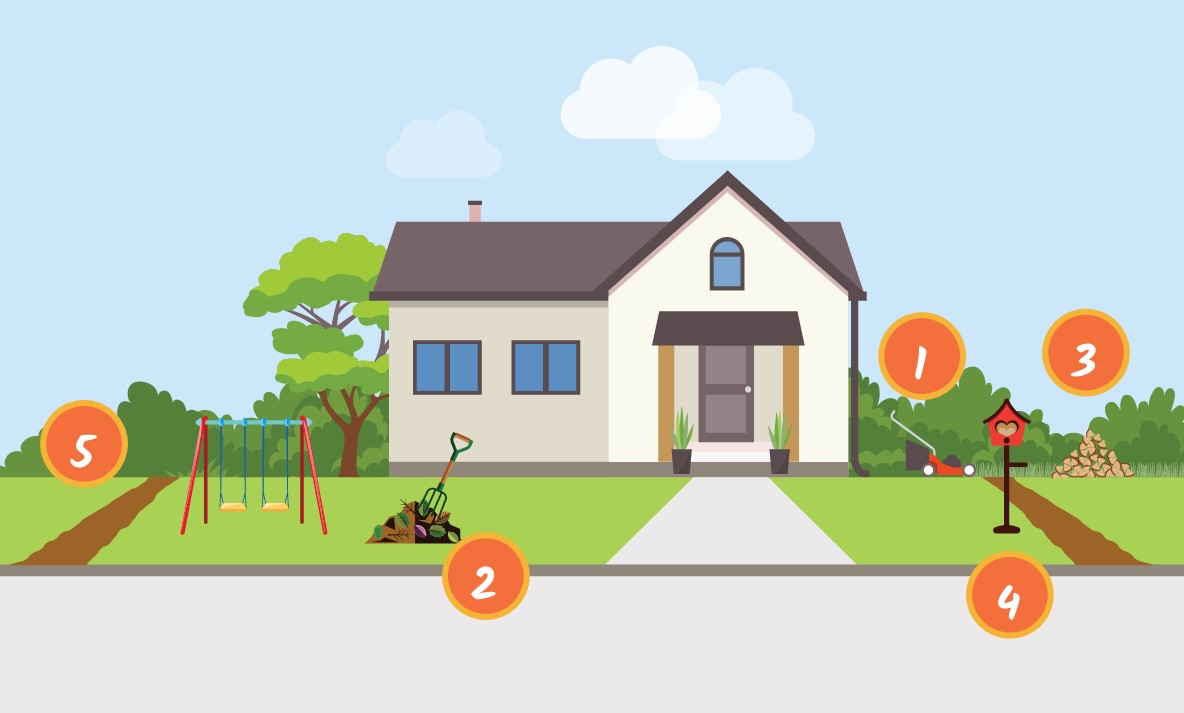
To learn more about tick bite prevention and how to keep ticks out of your yard, visit Tick Frequently Asked Questions.
Resources for Educators
Maine CDC developed vectorborne school curricula for 3rd-8th grade classrooms. The curriculum is aligned with Maine Learning Results. School nurses, teachers, and other youth leaders are encouraged to use this resource in their classrooms.
Reports and Publications
Babesiosis Surveillance Reports
Maine CDC publishes yearly data on babesiosis cases and rates in Maine in yearly Babesiosis Surveillance Reports.
- Babesiosis Surveillance Report (PDF) 2014 | 2015 | 2016 | 2017 | 2018 | 2019 | 2020 | 2021 | 2022 | 2023
Tickborne Disease Data on the Maine Tracking Network
The Maine Tracking Network uses data from case reports, surveys, and tick submissions to help understand the spread of tickborne diseases in Maine. The dashboard includes real-time data, maps, charts, and graphs for anaplasmosis, babesiosis, and Lyme disease.
Resources
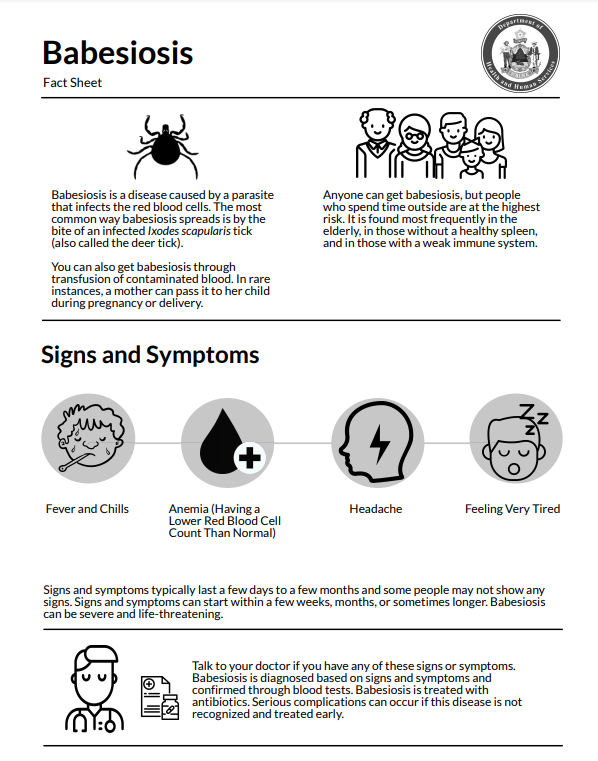
Babesiosis Factsheet (PDF) | عربي | Français (PDF) | Kreyòl Ayisyen (PDF) | Kiswahili (PDF) | Lingala (PDF) | Português (PDF) | Soomaali (PDF) | Español (PDF) | Tiếng Việt (PDF)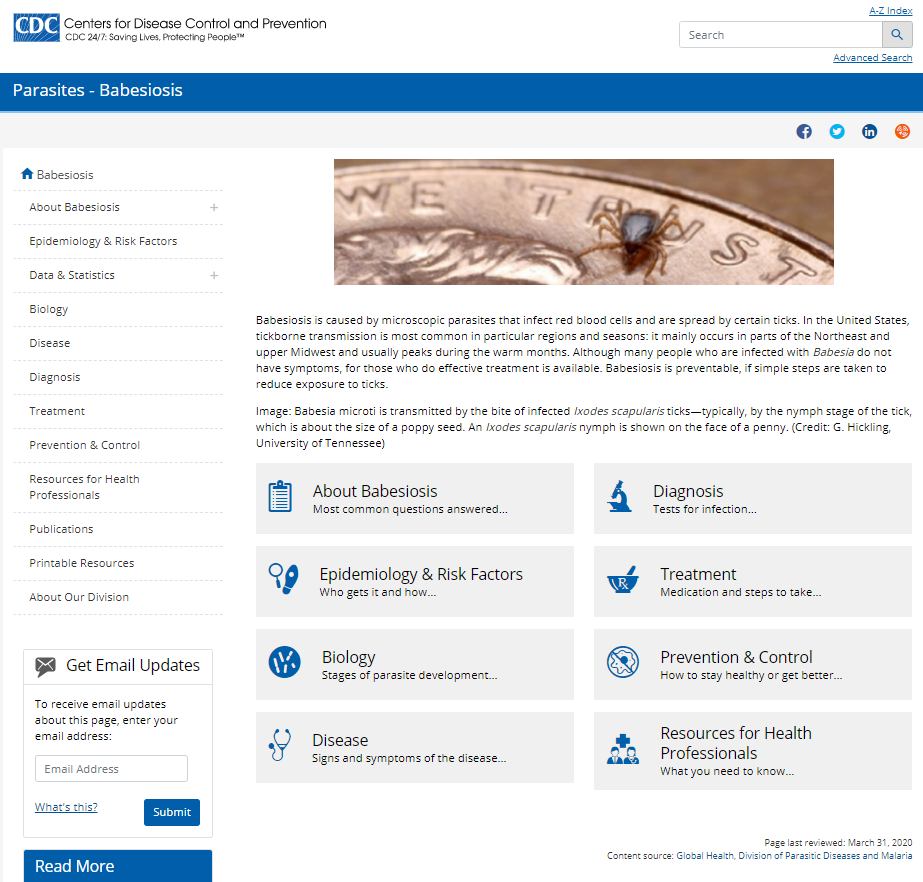
U.S. CDC Babesiosis Information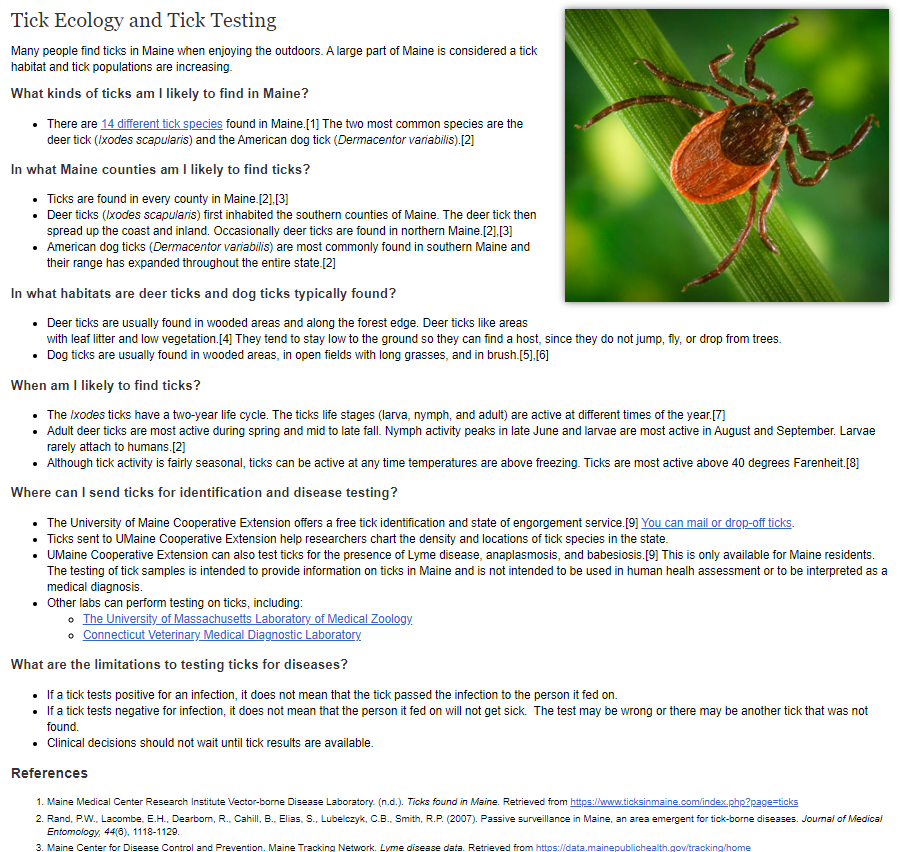
Frequently Asked Tick Questions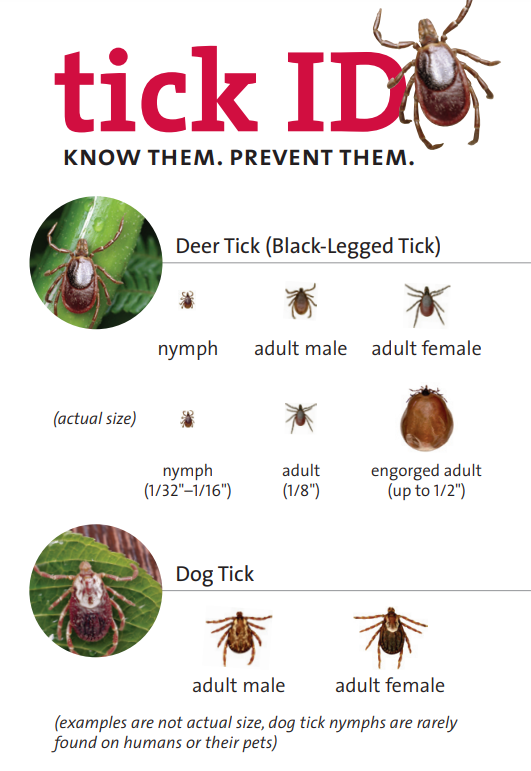
Tick Identification Information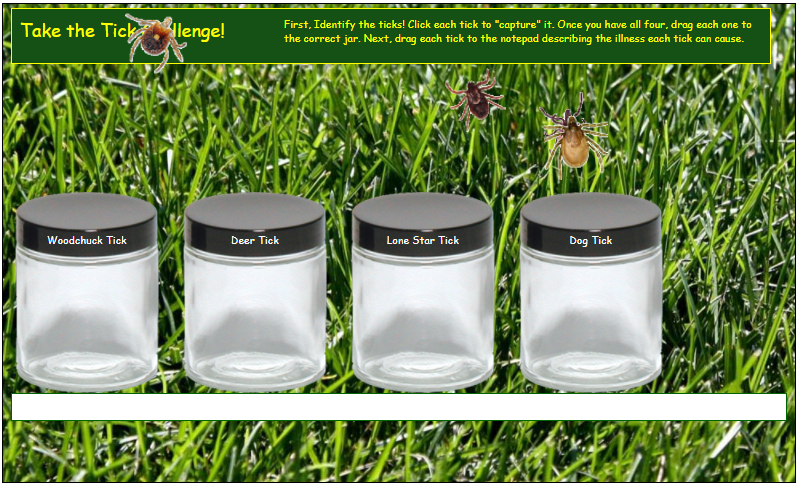
Interactive Tick Identification Game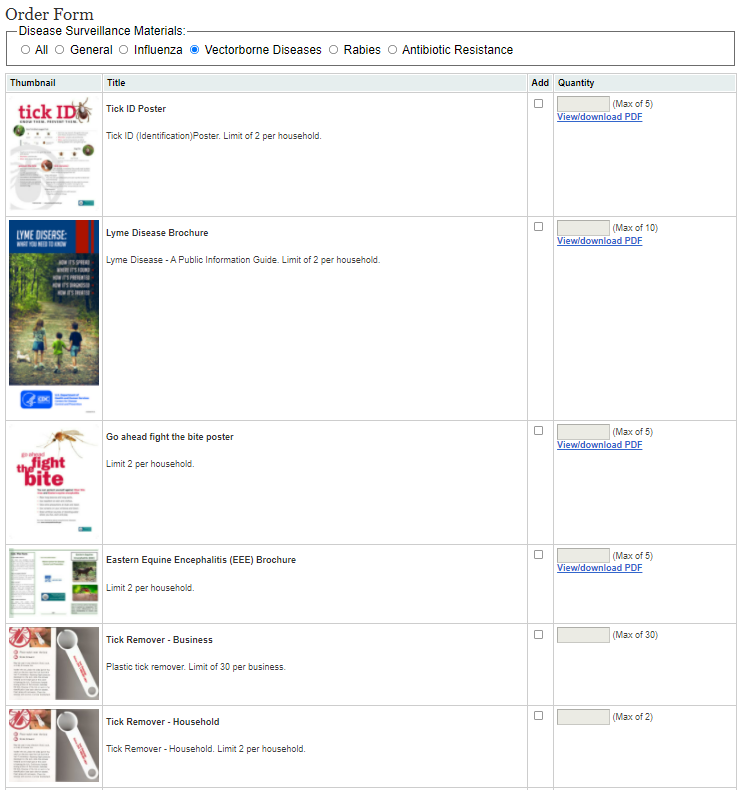
Orderable Materials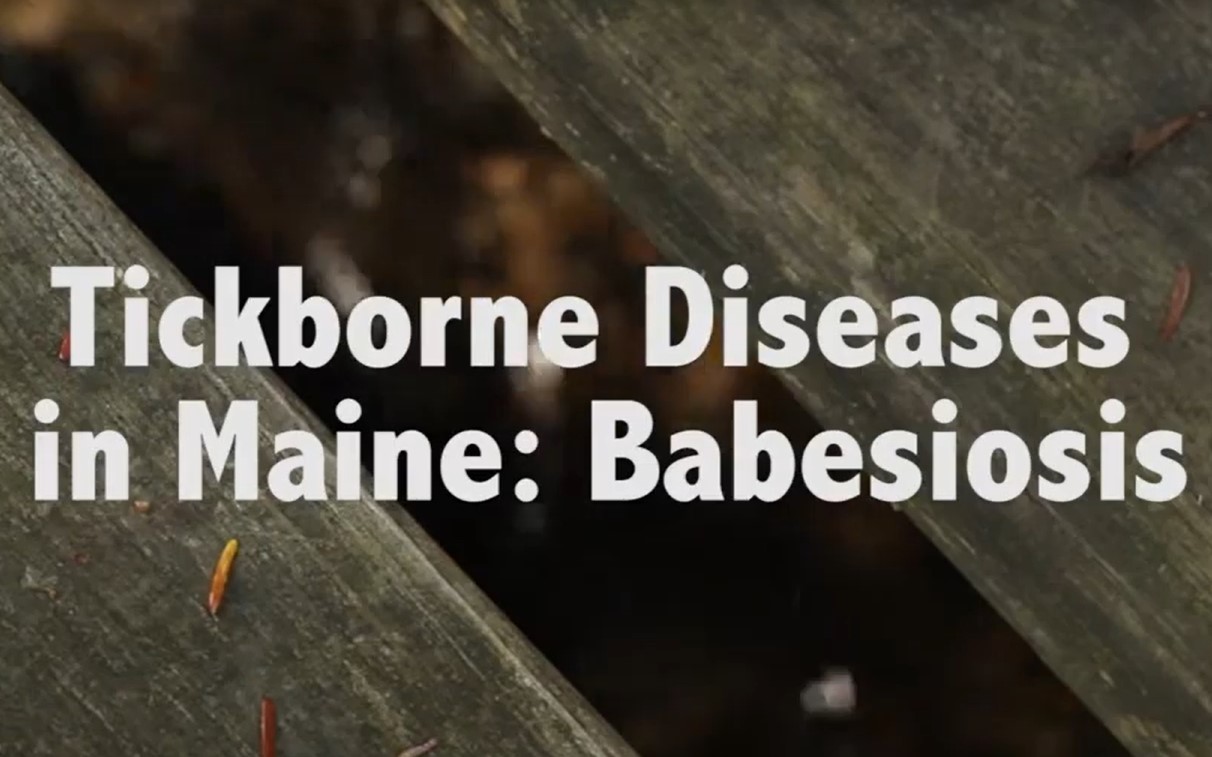
Tickborne Diseases in Maine: Babesiosis Video
Tickborne Disease 2024 Webinar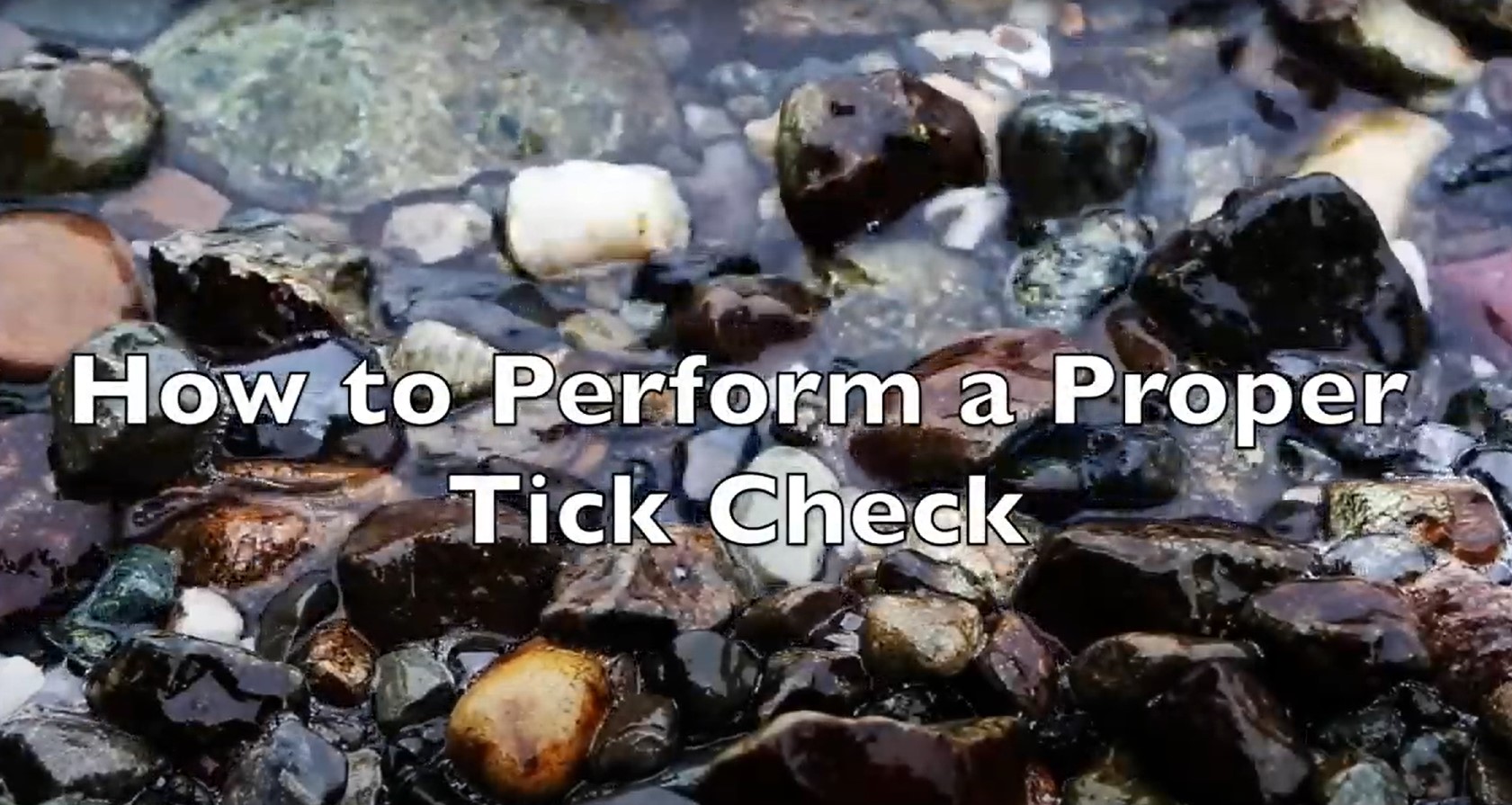
How to Perform a Tick Check Video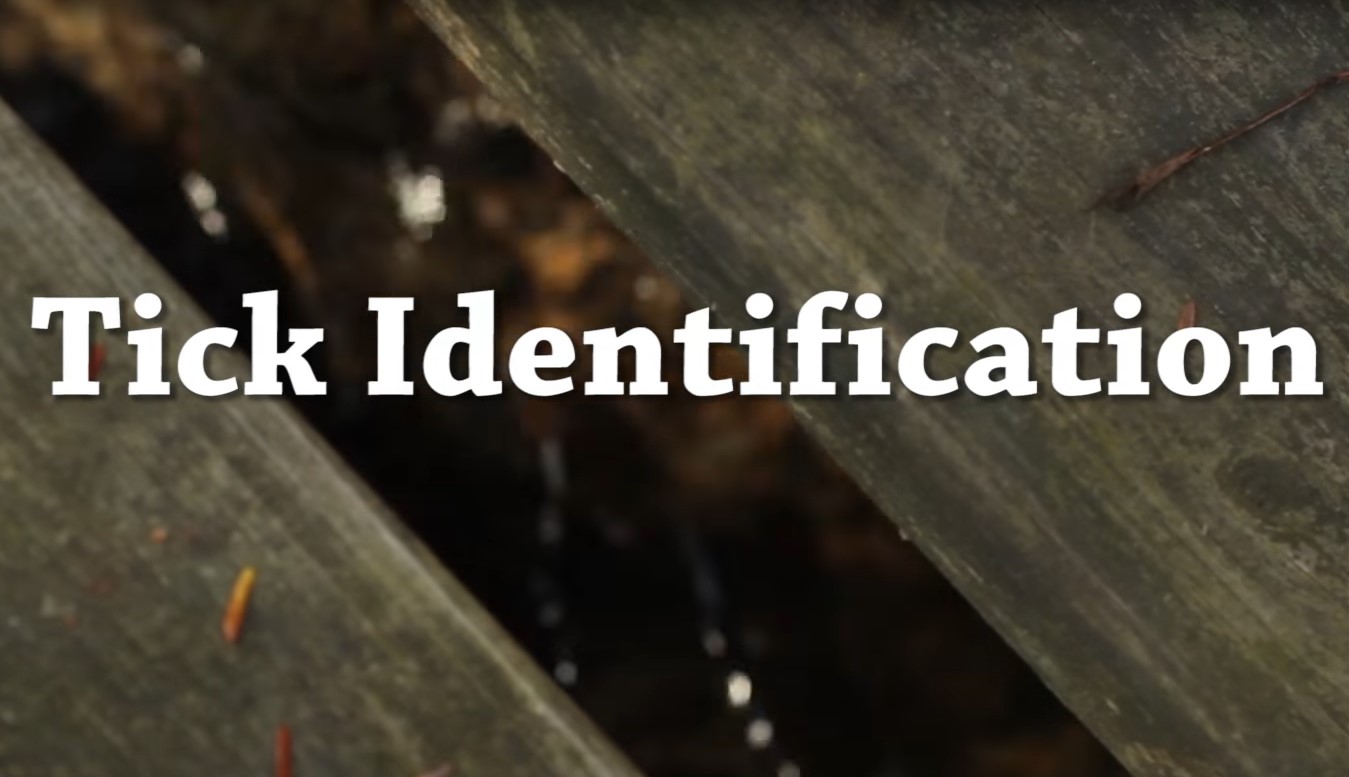
Tick Identification Video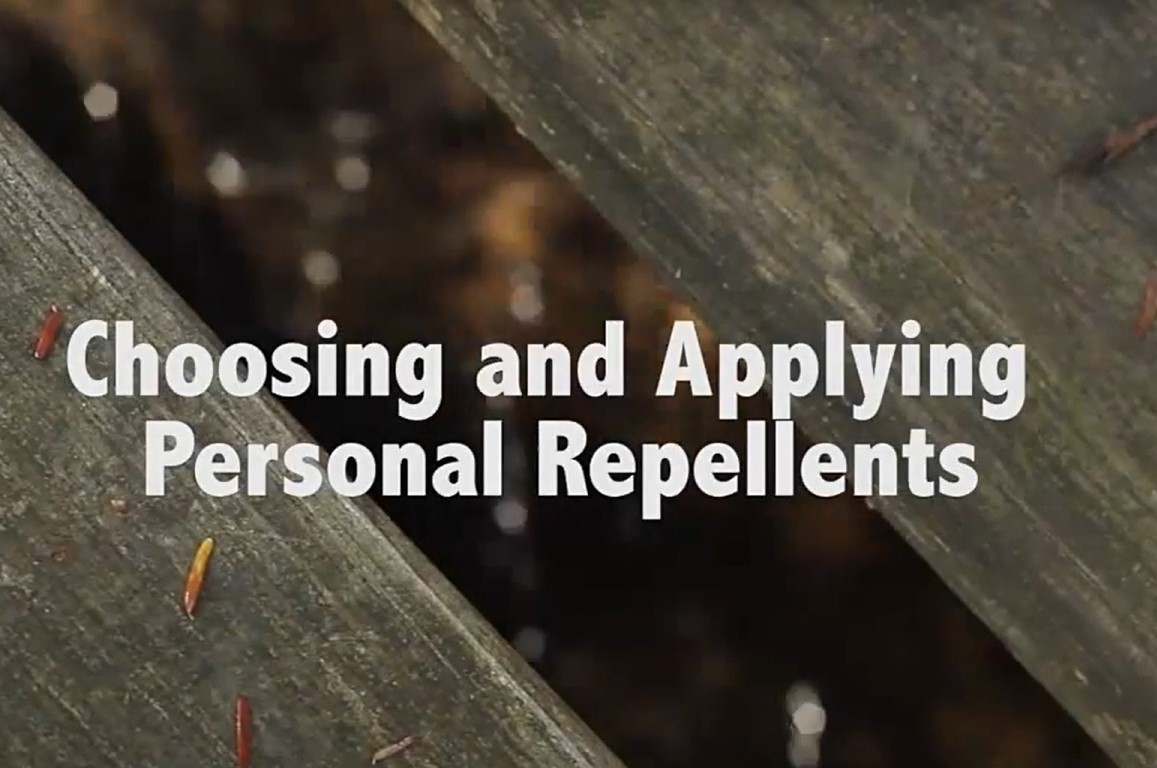
Choosing and Applying Personal Repellents Video
Reducing Tick Habitat around Your Home Video
How to Choose a Residential Pesticide Applicator Video
Resources for Healthcare Providers
Icons from www.flaticon.com
